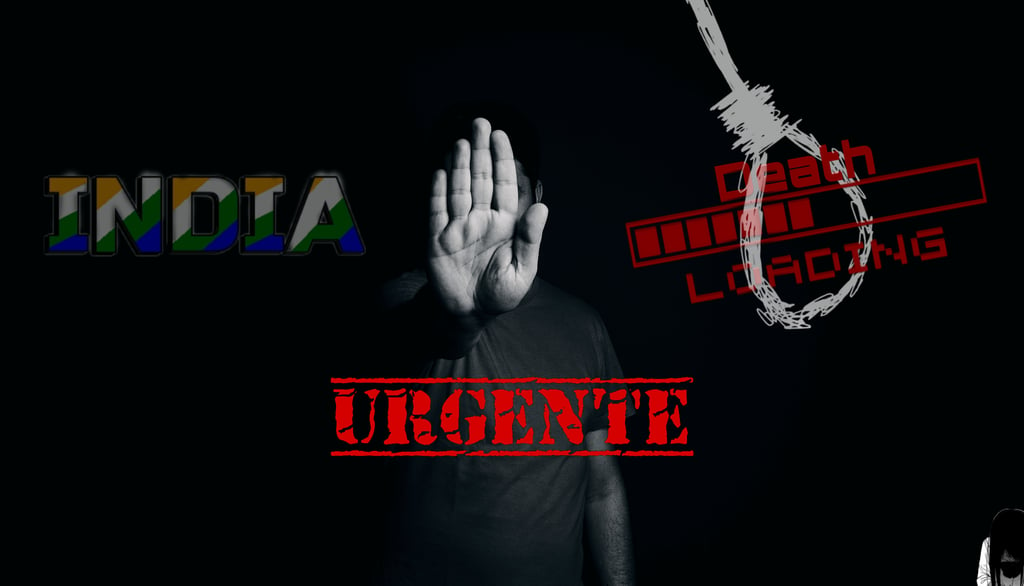
Suicide and its prevention: Urgent need in India.
Suicide is an emerging and serious public health issue in India. According to the World Health Organization (WHO), close to 800,000 people die by suicide globally every year, which translates to one person every 40 seconds. In India
SUICIDENEPOTISM/SOCIAL ISSUESINDIA/BHARATNEW YOUTH ISSUES
Sachin K Chaurasiya
1/24/20244 min read


Suicide in India is a serious concern!
India has witnessed a worrying rise in suicide rates in recent years, with the issue becoming a significant public health concern. According to the Accidental Deaths and Suicides in India (ADSI) 2021 report by the National Crime Records Bureau (NCRB), over 164,000 people died by suicide that year alone. This positions India as one of the countries with the highest absolute number of suicide deaths globally. The impact of suicide extends far beyond the individual, deeply affecting families, communities, and society at large.
One of the primary reasons behind this multifaceted problem is the inadequacy of mental health services in the country. Despite growing awareness, India faces a severe shortage of mental health professionals. As per the Mental Healthcare Act, 2017, the country requires one psychiatrist for every 100,000 people. However, the actual availability is far lower, with approximately 9,000 psychiatrists and fewer than 5,000 clinical psychologists for a population exceeding 1.4 billion. This disparity leaves many individuals without access to essential mental health support.
Economic hardships are another critical factor contributing to the rising suicide rates. Financial distress, unemployment, and indebtedness have been shown to significantly increase the risk of suicide. The pandemic exacerbated these challenges, leaving many individuals and families struggling to cope with sudden job losses, mounting debts, and economic uncertainty.
Additionally, societal pressures, particularly on younger individuals, play a major role in suicide risk. Academic stress, peer pressure, and the fear of failure weigh heavily on students and young professionals, often leaving them vulnerable to mental health challenges. The National Mental Health Survey of India, 2015-16, revealed that young adults between the ages of 15 and 29 are one of the most affected demographics, with suicide being a leading cause of death in this age group.
Cultural stigmas surrounding mental health compound the problem further. Fear of judgment, social ostracization, and deeply ingrained taboos prevent many individuals from seeking help. Discussions about mental health are often avoided, and suicide remains a topic shrouded in silence. This stigma perpetuates a lack of awareness and reinforces the cycle of isolation for those struggling with suicidal thoughts or mental illness.
Addressing the crisis requires a multifaceted approach: expanding access to mental health resources, improving socio-economic conditions, promoting awareness, and dismantling stigma through education and open conversations. Only by addressing these interconnected factors can India make meaningful progress in reducing its suicide rates and fostering a culture of mental health care and support.


Suicide and its Prevention
The COVID-19 pandemic has significantly exacerbated mental health challenges in India, amplifying existing vulnerabilities. Prolonged lockdowns, economic instability, and social isolation have taken a heavy toll on the mental well-being of many individuals. The uncertainty and fear surrounding the pandemic, combined with the disruption of daily life, contributed to heightened stress, anxiety, and depression. For some, these challenges led to an increased risk of suicidal behavior, particularly among individuals facing financial hardship, job losses, or the loss of loved ones.
In response to this growing crisis, several initiatives have been launched across India to address suicide prevention. Mental health advocacy organizations, non-governmental organizations (NGOs), and government bodies have stepped up efforts to create awareness, improve access to mental health services, and encourage community-based support systems. Campaigns aimed at reducing stigma and promoting mental health literacy have gained momentum, particularly in urban areas where awareness is comparatively higher. Digital platforms offering teleconsultation and counseling have also emerged as a critical support system during and after the pandemic.
Despite these efforts, much more needs to be done to comprehensively address the multifaceted dimensions of suicide prevention. The challenges are vast, spanning mental health infrastructure, socio-economic inequalities, and deep-seated cultural stigmas surrounding mental health and suicide.
To tackle this crisis, India must adopt a holistic and integrated approach:
Strengthening Mental Health Infrastructure: Increased investment in mental health services is crucial. Expanding the availability of mental health professionals, setting up mental health centers in rural and underserved areas, and integrating mental health services into primary healthcare can ensure broader access.
Addressing Socio-Economic Determinants: Economic stressors such as unemployment, indebtedness, and poverty must be addressed as part of suicide prevention efforts. Providing financial support, skill development programs, and employment opportunities can help reduce the socio-economic vulnerabilities that contribute to mental health challenges.
Reducing Stigma: Public awareness campaigns should be intensified to combat cultural taboos and misconceptions about mental health. Open discussions in schools, workplaces, and communities can normalize seeking help and foster a culture of empathy and support.
Leveraging Technology: Digital mental health platforms can bridge the gap in access to services, particularly in remote areas. Promoting affordable, accessible tele-mental health services and mobile apps can help individuals seek timely support.
Empowering Communities: Grassroots community programs can play a pivotal role in creating support networks. Training community leaders, educators, and healthcare workers to identify and support individuals at risk can enhance early intervention efforts.
Policy-Level Changes: Suicide prevention must be integrated into public health policies with dedicated funding and resources. The government can collaborate with mental health organizations and international bodies to implement evidence-based strategies.
By prioritizing mental well-being, respecting cultural diversity, and fostering systemic change, India can work towards significantly reducing suicide rates. Empowering individuals with the knowledge and resources to seek help and creating environments that support mental health are critical steps in building a society where suicide is no longer a leading cause of preventable death. Mental well-being must become a national priority, transcending economic, social, and cultural barriers to ensure a healthier future for all.
Subscribe to our newsletter
All © Copyright reserved by Accessible-Learning
| Terms & Conditions
Knowledge is power. Learn with Us. 📚


